Misyon Online - September-October 2010


COVER STORY PHOTO
The photo was taken during the mini-pilgrimage of seven young Columban priests to Paete, Laguna, a place that is very significant for us because of a Columban martyr, Fr Francis Vernon Douglas from New Zealand, 'who died there at the hands of the Japanese on 27 July 1943 during World War II.' We walked from Pililla, Rizal, where Fr Douglas was pastor when the Japanese brought him to Paete where he was tortured and died.
It was a good two days' walk. We visited different churches along the way. When we arrived in Paete we met two eyewitnesses who gave us an account of what really happened. The martyrdom of Fr Douglas is a living example for us. We can be martyrs, not because we want it but because it is the most fitting and loving response at a particular moment.
After that pilgrimage we set off on a month-long pilgrimage in Europe,
starting in Ireland and ending in Italy, following in the footsteps of St
Columban, the patron of our Society. We were joined by 33 other young Columban
priests who are working in 14 different countries. (Fr Rolly Aniscal).

Mommy Paz: Modern-day Florence Nightingale Dies
By Fr Brian Gore
Last Sunday (8 August), “Mommy Paz Torres,” as she was affectionately known to many, died peacefully here in Bacolod City. She was 90 years old.
She died unrecognized by her city and province, which she served so well as chief nurse of the Corazon Locsin Montelibano Memorial Regional Hospital for many years right up until her retirement.
She was a modern day Florence Nightingale. Even in retirement she continued to help hundreds of poor patients coming mostly from remote areas of southern Negros.


A Woman for Her Time
By Stan and Moya Mac Eoin
After a six week boat journey, the 18-year-old postulant never expected to see her family or native country again. But like many others before her, and others with her on that journey, she accepted it as God’s will for her. She would fulfil her vocation as a Loreto Sister teaching the daughters of professionals and civil servants, army officers and high ranking policemen in India, and also engage in some charitable work to help alleviate the suffering of the myriads of poverty-stricken people in the teeming cities.
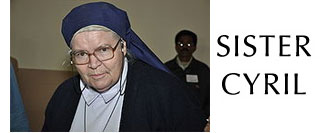

Dealing Positively With Life Despite Uncertainties
by Ric Vincent M. Dumaog
(Introduction by Fr Oliver McCrossan)
I was trying to look back at my past . . . I come from a very poor family. My father was a carpenter-painter-tricycle driver rolled into one. He tried to work in all kinds of jobs, even went fishing, just to help us survive. No one could ever have imagined how I would graduate from college and how we would survive. If not for my determination to finish college, I know I would be a beggar.
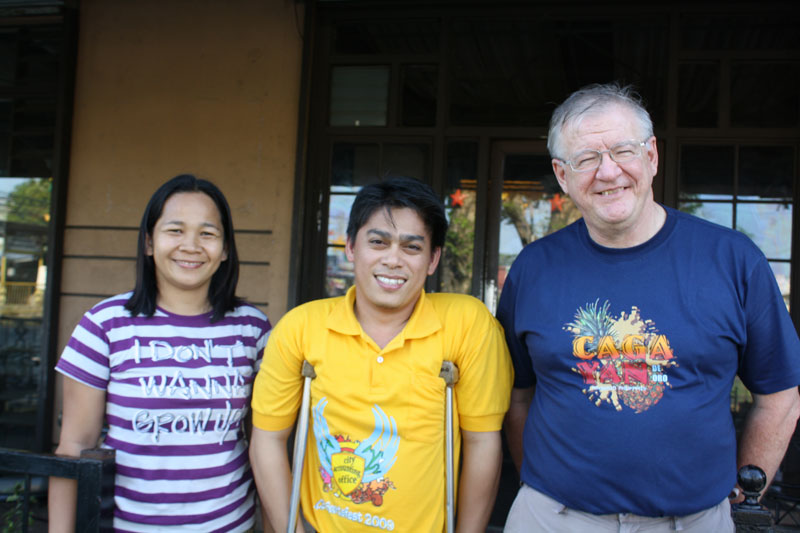

Poverty
By Andy Gregorio
I have experienced deep poverty in relationship. Due to poverty and my great desire to become a professional, I was separated from my parents at the age of six. My father was a simple fisherman and my mother a housewife taking care of us their eight children. Life was so difficult for us, trying to make both ends meet daily. Even more difficult was our schooling. With this situation I decided to go with my uncle who offered to help me in my schooling in faraway Palawan.

TANVIR
By Gloria Canama
Tanvir was born on 17 October 1945 in Tarbert, County Kerry, Ireland where he grew up and had his initial formation in life with the loving nurturance, guidance and support of his family and the earth community in the area. ‘I was born in rural Ireland so my relationship with nature was very good. I loved to stroll through the fields, mountain bogs and to listen to running water. It was very therapeutic and I learnt so much from nature and her wisdom’, he reflected.
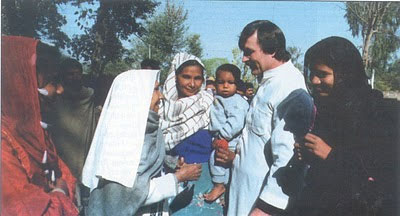

‘His first love . . . and his real love’
By Rowena D. Cuanico
Big heart. These are two words that I feel best describe Fr Pat McCaffrey, the man, his life, faith and vocation. His heart was big, so big that it had a sacred space for everyone. In his heart, everyone mattered.I first heard the name Pat McCaffrey when we – six Filipino Columban lay missionaries on our first mission assignment in Fiji - were doing our orientation on Columban Mission in Fiji. But it wasn’t until Beth Briones and I arrived at Holy Family Parish, Labasa, a few months later that I started to come to know more about Father Pat and his work with the people of Labasa.
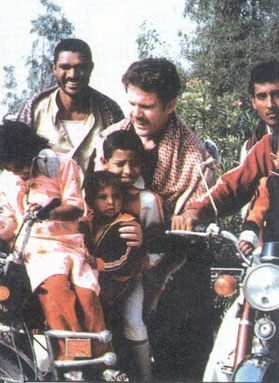

The Saint Who Failed Math
By Richelle H. Verdeprado
This was my first time to hear of the name Chiara Luce Badano. This was also my first time to write an article about a teenager who will soon be beatified.
I didn’t know Chiara – ‘Chiara’ is the Italian form of ‘Claire’ and means ‘clear’ - Luce personally and there’s no way for me to meet her now. Luce died a year before I was born. But a well-lived life is a life that is never meant to die. It is a life worthy of being shared with people of all ages from all walks of life. Just as I longed for and tried hard to know about the lives of heroes and heroines who were generations ahead of me, I felt stirred in learning about Luce, a fine-looking, creative and sports-loving Italian who died even before she reached 19. With all interest, I thoroughly searched for facts about her. I wanted to know the events in her life that have led to her beatification on 25 September this year.


Vocation Story: A Chapter In My Life
By Jason Antiquera
Stories we read in books are often broken into chapters not only so that readers can have a good stopping point in reading but also to indicate movement and shifts in time, situations and, in some case, places in the story. My period of regency, which is a time of discernment while being out of seminary formation, was a particular and important chapter in the story of my life. Such a period indicated a serious time of reflection on the movement of the Spirit in my life as it unfolded in and through my daily experience.
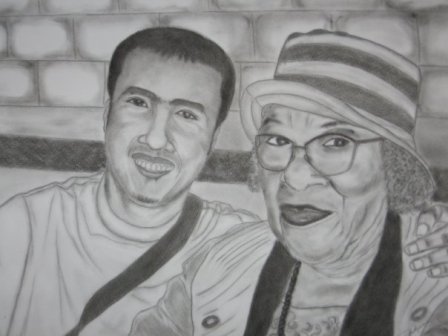

A Woman For Her Time
By Stan and Moya Mac Eoin
The authors, husband and wife, are retired teachers who live in Kinvara, County Galway, Ireland, on the southern side of the famed Galway Bay. Stan has been a lifelong friend of your editor since they became classmates in O’Connell Schools, Dublin, in Grade Three. One of the schools in Dublin that sends students to help in Kolkata, Stanhope Street, is where your editor spent four years in the Boys’ Kindergarten.
After a six week boat journey, the 18-year-old postulant never expected to see her family or native country again. But like many others before her, and others with her on that journey, she accepted it as God’s will for her. She would fulfil her vocation as a Loreto Sister teaching the daughters of professionals and civil servants, army officers and high ranking policemen in India, and also engage in some charitable work to help alleviate the suffering of the myriads of poverty-stricken people in the teeming cities.
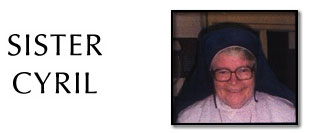 After completing her novitiate, qualifying as a teacher and gaining a doctorate in science from Lucknow University, Sr Cyril Mooney was assigned to the prestigious Loreto Convent School in Sealdah, Calcutta, now known as Kolkata, as its principal. She ran a very good school, with its primary and secondary components, and many of its pupils won awards for their excellence in a range of subjects.
After completing her novitiate, qualifying as a teacher and gaining a doctorate in science from Lucknow University, Sr Cyril Mooney was assigned to the prestigious Loreto Convent School in Sealdah, Calcutta, now known as Kolkata, as its principal. She ran a very good school, with its primary and secondary components, and many of its pupils won awards for their excellence in a range of subjects.
Sister Cyril lived in Entally Convent, a few kilometers from the Sealdah school. Every day she saw the many families living on the pavements and in the slums as she made the journey between convent and school. She began to question where her priorities as an educator and missionary should lie. Did she have to choose between running a very good school and helping the poorest of the poor? Before her, Mother Teresa had received episcopal permission to leave the Loreto Sisters and to establish the Missionaries of Charity to bring comfort and solace to the poorest, the marginalized, the disabled, orphans and lepers in the aftermath of the British-engineered horrific famine of 1943 in which two to three million in Kolkata died of starvation (food and the means of transporting it were destroyed as part of a wartime effort to halt the Japanese advance).
Sister Cyril’s reflections brought her to the conclusion that the only way to raise the poorest out of their wretched condition was to provide their children with food and education. Coming from Ireland, she would have remembered the teaching of Thomas Davis, ‘Educate that you may be free’. But even more than that she was conscious of the command of Jesus Christ, ‘Suffer the Little Children to come unto me’. But how could children fulfil their destiny living in what some would describe as hellish conditions in their rat-infested hovels or pavement sleeping sites? Sister Cyril became aware of young girls being kidnapped for evil purposes, of children being molested and raped. She had to do something to change the situation. Nothing less than a revolution was needed.
Moya, Stan and two young Sealdah friends
The solution was to invite the poor girls from the streets and slums to come to her school to be educated and fed, and given sleeping accommodation if that was necessary. But how were the largely middle-class parents of the fee-paying pupils going to react to an influx of ragged, illiterate girls in their prestigious school? This had to be faced and the authorities in her congregation had to be convinced that what she was doing was right.
The obstacles were overcome and over time a system for integrating poor girls into the school was devised. This involved providing accommodation on the flat roof of the school for up to 300 girls. The fee-paying students were enlisted to help, on a one-to-one basis, in bringing the newcomers up to an educational standard where they could be placed in a class suitable to their age. Children who came at an early age were, in time, placed in a class in Loreto Sealdah, which is an English-medium school. Older Bengali-speaking girls were placed in a Bengali-medium state school, but they lived and were given their meals in Loreto Sealdah.
Sister Cyril called her new mission the ‘Rainbow Project’, because after the rain the rainbow brings sunshine and happiness. The students are proud to call themselves the ‘Rainbow Children’. Soon Sisters in other Loreto schools followed Sister Cyril’s example and now thousands of girls have been saved from poverty and degradation and have been put on the road to emancipation, fulfilment and independence.
'A Dublin High School student says goodbye to his pupils after classes at Tengra Refuse Site, Kolkata (Calcutta)
A Drop in the Ocean
Even though the Rainbow Project spread to other areas in Kolkata, in India and further afield, Sister Cyril realized that there were still thousands of boys and girls with no access to education. With the support of UNICEF, the West Bengal government,(which met the cost of classroom materials, and a number of NGOs, she established a scheme to train teachers in a crash programme over a twelve month period. The trainees are drawn from motivated but unemployed young men and women who had stayed at school themselves up to about 15 years of age. These teachers then go back to their own areas and conduct classes. They and the children are continuously evaluated and supported. Up to 500 of these ‘schools’ are now being run throughout the city, and in its outskirts, and they have a combined enrolment of approximately 30,000.
But Loreto Sealdah has also promoted the raising of educational standards throughout the whole educational system not only in Kolkata, but in making its expertise accessible to principals and teachers throughout India. ‘School transformation’ is the goal and courses in curriculum content, methodology and human rights education are regularly held. The writers of this article were privileged to reinforce the training received by teachers from Silchar, in Assam, when they were invited by Fathers Jose and Anthony, Salesian priests who built a new English-medium school there, to help prepare the teachers before the school opened and in a subsequent year to help monitor their performance and to assist with vocational and adult education courses.
Moya, right, with primary school teachers in Assam.
Forever Reaching Out
Wherever there is a need perceived and Sister Cyril and her supporters have
the capability and means to meet the need, they have always done so. This
includes ‘Childline’ where older Rainbow children help operate a free dedicated
Kolkata-wide telephone help-line for children in distress. If necessary, the
school transport can then be used to rescue a child caller.
The Rainbow Children are also committed to distributing food to the destitute
every day, mostly at the nearby huge Sealdah Railway station. However, the
railway authorities now want this to be stopped as they feel that the
distribution of food is drawing the destitute to their station. At present,
there is on-going dialogue on the issue, as the authorities recognise the
motivation behind the scheme. A home, Balobasha (House of Love), has been set
up, with the help and support of Irish benefactors, as a permanent residence for
some of the older destitute women.
An effort is made to help the parents of the Rainbow and non-fee paying children become more self-sufficient and independent. Medical facilities are provided at the school and the parents are helped to develop skills that will help them earn a livelihood. Women (mostly) have established vegetable stalls, made handcrafts and saris and set up other worthwhile enterprises through finance obtained through a micro-credit project that has been supported by the Irish League of Credit Unions.
A Micro-credit meeting in Sealdah, Calcutta
Through cooperation with another NGO, girls who have been rescued from trafficking (mostly for slave labor in homes, but some for prostitution purposes also) have been welcomed in Loreto Sealdah where they receive education, or go to a nearby Bengali-medium state school from there.
In the past year Sister Cyril has reached out to the children of migratory workers in the ‘Brick Fields’. Families travel long distances to find work in the brick fields and as the payment is based on piece work, long hours are worked and all the members of the family who can do so help make the bricks. Sister Cyril succeeded in getting the cooperation of some owners to facilitate her in setting up classes for a few hours in the evening for children who would otherwise go through life with no education at all.
She also had schools established on the outskirts of the city in an effort to discourage young men and women from coming in to the city with its huge unemployment, poverty, lack of accommodation, exploitation and vice.
Recognition
 Over the last number of years Sister Cyril’s work has been recognised within
India and abroad, especially in Ireland. She has been honored by the Government
of India in being awarded the Padma Shree, the highest honor that can be
bestowed on a non-citizen of India. The Irish government has acknowledged her
work and she will receive an honorary degree from Trinity College, Dublin, this
year.
Over the last number of years Sister Cyril’s work has been recognised within
India and abroad, especially in Ireland. She has been honored by the Government
of India in being awarded the Padma Shree, the highest honor that can be
bestowed on a non-citizen of India. The Irish government has acknowledged her
work and she will receive an honorary degree from Trinity College, Dublin, this
year.
Students from a number of schools, including Duns Scotus (a mixed school), Belvedere College (boys) and Stanhope Street (girls) in Dublin, spend a number of weeks every year helping in Loreto Seladah and with other projects in Calcutta and its hinterland. Many young teachers and other young people, as well as some retired adults, mostly from Ireland and Australia, but also from a range of other countries including Iceland, Norway, Spain and Japan, offer their services to Sister Cyril to help teach and socialize with the Rainbow Children.
Stan with Sister Cyril
The writers of the article feel privileged to have had the opportunity to participate in the work being done in Loreto Sealdah. They have helped Rainbow Children with their homework and got to know some of them very well. They have seen young girls grow from typical young teenagers to sophisticated, caring students, graduates and employees. They have adopted the values imbued in them by Sister Cyril and her colleagues and they have remained steadfast to the values of their faith, whether that be Hindu, Muslim or Christian. They have a tolerance and respect for diversity that is a template for all young students everywhere.
Thank you, Sister Cyril, for giving us the opportunity to be part of your work.
You may contact the authors at stanmaceoin@yahoo.com
Dealing Positively With Life Despite Uncertainties
By Ric Vincent M. Dumaog
(Introduction by Fr Oliver McCrossan)
By any standards, Ric Dumaog is an extraordinary young man. He was stricken with polio when only nine months old leaving him paralyzed in both legs. Despite his disability, he graduated with a degree in accountancy. Married with three young children, Ric is a founding member and president of STAND, an organization actively campaigning for persons with disabilities in Ozamiz City. Being very determined, he took up law studies and is now in his final year. He writes below about his life.

I was trying to look back at my past . . . I come from a very poor family. My father was a carpenter-painter-tricycle driver rolled into one. He tried to work in all kinds of jobs, even went fishing, just to help us survive. No one could ever have imagined how I would graduate from college and how we would survive. If not for my determination to finish college, I know I would be a beggar.
I am a polio victim. My feet are underdeveloped because of polio. But this didn’t stop me from going to school, to dream of a better life. God is certainly good. He sent instruments to show His love for me. I was accepted in a scholarship program until I finished college. I never let my disability hinder my aspirations of doing great in school, making friends with schoolmates and living a normal life. I graduated as a Bachelor of Science in Accountancy from a prestigious school in my place.
Reality set in when I was already applying for work. Nobody wanted to employ me because they considered me a liability, instead of an asset, to their company. It hurts me so badly, but the positive outlook in me keeps on burning inside. Although there were times when I was affected by rejection, I still hoped that someday I could land a good job. It took me three years after my graduation before I got my first work, in a private company. It was a great feeling to know that there are still people who trusted my capacity.
It was during this time, 1998, that I met my wife, Cherry Mae. I got married when I was 24 years old. We are blessed with three beautiful children, one boy and two girls. In 2003 I was employed in Ozamiz City Hall as a casual clerk. After four years as a casual, I was so disappointed that I had not yet got a regular position. So I decided to look for a sponsor to send me to law school. I really believe that even if I didn’t get a regular position, as long as I could finish law school, there would be many opportunities in store for me. God, in his Divine Providence, sent Fr Oliver McCrossan to be an instrument in realizing my passion for law school and to become a lawyer. Father Ollie shouldered my tuition fees.
Presently, I am now in my fourth year in law school. It’s a mixture of hardships and challenges. However, no amount of hardships can stop me from pursuing my ultimate dream of becoming a lawyer. Even if I have to climb everyday to our classroom located on the third floor of the school building, I don’t mind. Even if I have to defy storm and rain just to attend my daily classes, I have gladly been doing it.
I still continue to work and at the same time study. I have very limited time to study because from work I go directly to school up to 8:00 o’clock in the evening. But still, up to the wee hours at night, I am reading my books because I love what I’m doing. It’s just that I have limited time for my family. But they are so supportive of what I’m into. They know that by the time I finish my studies and become a lawyer, our life will be totally changed.
Reviewing for the Bar Exam will mean expenses and it will be a very risky investment considering that it is one of the hardest exams in the Philippines. Risky, because there’s a chance that I will flunk it. But being the positive person that I am, I know I can make it. I know that I will become a lawyer.
Despite my disability, I can say that I am giving my family a better life compared to what I experienced when I was young. But I know I can give more to them, especially in securing a better future for my children, if I succeed. A better life for my family and an opportunity to help others will be my inspirations to hurdle all that challenges that life is giving me.
You may email Father McCrossan at ollie.mccrossan@yahoo.com.ph
Mommy Paz: Modern-Day Florence Nightingale Dies
By Fr Brian Gore
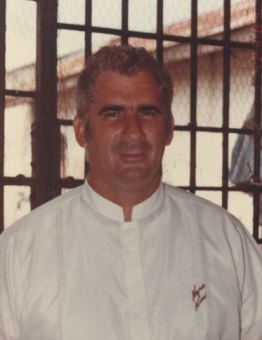
Fr Brian Gore, in Provincial Jail, Bacolod, mid 1980s
This article appeared in the Visayan Daily Star, published in Bacolod City, on Friday 13 August. Mommy Paz Torres was a great friend of the Columbans, especially since the days of the Negros Nine in the mid 1980s.
Last Sunday (8 August), “Mommy Paz Torres,” as she was affectionately known to many, died peacefully here in Bacolod City. She was 90 years old.
She died unrecognized by her city and province, which she served so well as chief nurse of the Corazon Locsin Montelibano Memorial Regional Hospital for many years right up until her retirement.
She was a modern day Florence Nightingale. Even in retirement she continued to help hundreds of poor patients coming mostly from remote areas of southern Negros.

L to R: Rosita Montañez, Fr Brian Gore, Paz Torres, Nena de Leon
I first met Mommy Paz in January 1970, while I was finishing my language school studies at the Redemptorist Monastery. I used to go with the Apostolic Ladies of the Redemptorist Church to visit the poor patients in the Provincial Hospital to practice my Ilonggo. Mommy Paz was our contact person. We had been friends ever since.
Mommy Paz became our liaison person with the hospital for all the poor patients coming from the south. She was a godsend for us priests who were besieged on a daily basis for help from our poor parishioners in need of medical care. In the 70s and 80s there was very limited medical care in the south for seriously ill patients.

In Provincial Hospital, Bacolod
Those who could not afford to go to Bacolod just went home to die. Mommy Paz saved many hundreds from certain death.
Her loving care for our poor patients certainly took a burden off us priests. Mommy Paz accessed what help there was available from the hospital and what was lacking was provided by a special fund in her care from the priests. Even when she retired she continued to go to the hospital, often daily, to follow up our patients.

Fathers Brian Gore and Niall O'Brien with the 'Tres Marias of Negros 9' - Nena, Rosita and Paz
On a very personal note Mommy Paz used to visit me and my companions (Negros 9) almost on a daily basis at the Provincial Jail during our imprisonment. She would also extend her medical help to any sick inmates in the jail. She never waned in her support for us during those difficult times.

In Provincial Jail, Bacolod
Generations of young nurses passed through her supervision at the Provincial Hospital Dormitory. Around the world today there will be many a tear shed at her passing.
In recent years she suffered the various ailments of old age. She bore these patiently and with great faith. She would often say to me “I am ready to go”. May she now enjoy eternal peace.
“Come, good and faithful servant – I was sick and you cared for me.”(Matthew ch.25)
Taken during the funeral Mass of Mommy Paz
Mommy Paz was buried on Friday, 13 August at the Bago City Cemetery after Mass at the Airport Subdivision Church in Bacolod City.
Our Hideaway
A Thousand Stories in his Eyes
By Theo Nick Dioso
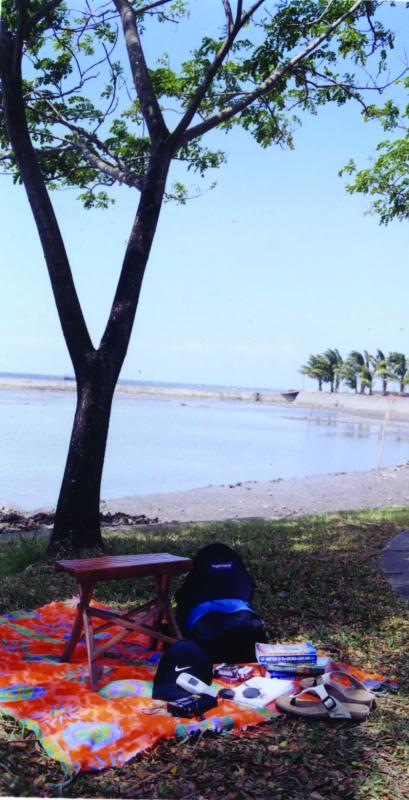
The clothes he was wearing were obviously rummaged from the dumpster, while his crooked fingers holding a soft drink cup said ‘McDonalds’. As the light turned red, he jumped on to the pavement and began knocking on tinted windows holding out his McDonalds cup for a few coins.
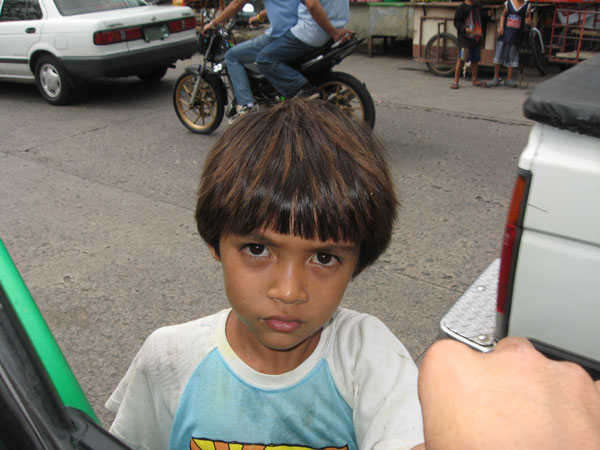
Unmindful of the heat, his bare feet making an almost inaudible sound on the concrete road as he moved from car to car, he got closer to me and I could see that painful grimace on his face. As the tap-tap of his small feet grew louder I tried to fix my gaze on the tailgate of the big SUV in front of me. I told myself that if the occupants of that SUV had no coins to spare, how could I also part with my precious coins? And then he was at my window. I froze. The light was taking forever to change. ‘What’s going on? Is it broken? He is still at my window’. Then I remembered our university priest saying, ‘Give a man a fish today, and he will have fish for one day . . . teach him how to fish and he will have fish for the rest of his life . . .’ ‘That light is definitely broken’, I thought.
With all the strength that I could muster, I tried not to look into his face but somehow a giant vise seemed to grip my head and turned it so that I was face-to-face with him. Then I saw him, or rather his eyes. They say that the eyes are the windows of the soul, but in his eyes I saw sadness, the sadness of a person who had been born into this world without hope, without a future, without life. His eyes were even hungrier than he looked and something told me that it wasn’t only food he was longing for.
His face held a thousand stories and I was sure that they were not bedtime stories. I was even sure that he had never heard one of those. Despite the tiny white foam forming at the corner of his mouth that said his tongue wasn’t only thick with thirst but also heavy with hunger; his McDonalds cup was still empty.
I felt sorry at that moment, for that single cry of hope in the night when his mother gave birth to him, that fateful night that brought him onto the street, that night his joyful mother looked up to heaven in praise for her son, her son that was now standing before me trying so hard to stand on his toes to reach up to my window, holding out his empty McDonalds cup. I was sorry indeed. Could a few of my coins atone for his suffering?
Ah, the light finally turned green. They were the most precious three pesos I ever parted with. Like a wisp of smoke he quickly disappeared from my side mirror, where, after all, a small boy does not take up much space. As for me though, questions began to rain down. The most prominent of all was: Did the unknown author of the words, ‘Give a man a fish today, and he will have fish for one day . . .’ think of him when he came up with that expression?
Poverty
By Andy Gregorio
Andy Gregorio and his wife Nora have been involved for many years with Worldwide Marriage Encounter in Dumaguete City where they live. They also served a three-year term in national leadership of the movement.
I have experienced deep poverty in relationship. Due to poverty and my great desire to become a professional, I was separated from my parents at the age of six. My father was a simple fisherman and my mother a housewife taking care of us their eight children. Life was so difficult for us, trying to make both ends meet daily. Even more difficult was our schooling. With this situation I decided to go with my uncle who offered to help me in my schooling in faraway Palawan.
The ordeal of being away from my parents, brothers and sisters was very difficult. I couldn’t depend on my uncle for my school expenses because he also had eight children to support. My uncle was only a government clerk with an income barely enough to support his own family. At the young age of ten I had to sell bread at dawn on weekdays and go fishing during weekends in order to have money to buy clothes, school supplies and other needs.
To make matters worse, the line of communication with my parents was cut-off. Not hearing from them, I experienced being ‘orphaned’ and left on my own. In those days there were no such things as cell phones or email. I finished elementary and high school on my own without the support of my parents. It was then I felt the craving for the care, support and love of my family, especially of my parents. I felt abandoned and the extreme poverty not only of material things but most of all the poverty of love, care and support. I suffered in silence and this craving for love, care and support slowly turned into a feeling of hatred.
I hated my parents for I judged that they had abandoned me, hadn’t supported me in my schooling, and had given me up while I was still very young. In my elementary and high school years and even when I was already in college, I envied my classmates whose parents were present during their Honors Day and who attended PTA meetings and other important events where parents are expected at the school. In fact I finished elementary, high school and college without my parents attending my graduations. This poverty of love, care and support was clearly manifested when I decided to get married without informing my parents or seeking their permission. I got married without parents or relatives, with only officemates and friends attending my wedding. Mabuti na lang pumayag si Nora!
Worldwide Marriage Encounter (WWME) played an important role in my healing. Our beautiful weekend experience started the process of healing, Various WWME enrichments, especially the ‘genogram’ or ‘family diagram’, helped me to discover more about the kind of person I am. My feeling of hatred lessened and I was slowly healed from the poverty of being uncared for, unloved and unsupported. Our WWME values such as ‘God does not make junk’, ‘Let your sacraments shine’, ‘Love is a decision’ and many others played an important role in reshaping my life. At least before my mother died we bridged the broken relationship we had. In fact she spent the last part of her life with us.
Looking back, I now realize that giving me up to my uncle when I was very young was the best option they could see at that time. Maybe if my parents hadn’t let me go, I would be like my brothers and sisters who were never able to finish college.
You may email the author at aa_gregorio@yahoo.com
Pulong Ng Editor
Pulong ng Editor
By Fr Brian Gore
Mommy Paz: Modern-day Florence Nightingale Dies
She died unrecognized by her city and province, which she served so well as chief nurse of the Corazon Locsin Montelibano Memorial Regional Hospital for many years right up until her retirement.
She was a modern day Florence Nightingale. Even in retirement she continued to help hundreds of poor patients coming mostly from remote areas of southern Negros.
Read more...TANVIR
By Gloria Canama
Gloria Canama, from Tangub City, Misamis Occidental, has been a Columban lay missionary in Pakistan lay missionary in Pakistan for almost 20 years. Fr Thomas O’Hanlon, known to his family as ‘Tommy’, was given the name ‘Tanvir’, ‘Enlightened One’, shortly after his arrival in Pakistan in 1982 by an old man. He died unexpectedly in Lahore on 5 June.

Tanvir was born on 17 October 1945 in Tarbert, County Kerry, Ireland where he grew up and had his initial formation in life with the loving nurturance, guidance and support of his family and the earth community in the area. ‘I was born in rural Ireland so my relationship with nature was very good. I loved to stroll through the fields, mountain bogs and to listen to running water. It was very therapeutic and I learnt so much from nature and her wisdom’, he reflected.
In response to God’s call to be a missionary priest, he joined the Columbans and arrived at St Columban’s Seminary in Ireland in September 1963 and was ordained on 21 December 1969 in his own home community in Tarbert.
Tanvir arrived in the Philippines in October 1970 and spent the first ten years of his missionary journey mostly in a number of parishes in my own home Diocese of Ozamiz in Mindanao. Naming significant experiences in his life, he had this reflection of his missionary journey in the Philippines:
This experience molded me and shaped my future. I joined a church that was journeying with and involved in bringing life to a people by responding to their concrete needs and problems. It identified with the poor and with and through them confronted the evil in society. It enfleshed, embodied Jesus’ words, ‘I have come that they may have life and life in abundance.’ This church was motivated by a faith that our God is a God of history, a God who became flesh, who experienced the messiness of human living and that salvation is also historical and concrete . . . It was here I experienced and learnt that the focus of mission is the coming of God’s kingdom, the reign of truth, justice, freedom, love, peace and joy.
The seed for moving on as missionary was sown during his sharing with a Filipino lay theologian, Karl Gaspar, about the new model of Church, who said to him ‘Maybe we should share this experience with other churches in Asia.’
He arrived in Pakistan April 1982. In his own words, Tanvir said, ‘I joined a Church that was becoming aware of the social dimension of its mission and searching for new ways to reach out and dialogue with Muslims.’ For the 28 years and 2 months before his death, minus the almost five years he spent on reverse mission in Ireland, Tanvir, ‘the inner light’, made flesh his faith, commitment and love of God, the people and the earth community in this ‘Land of the Pure’.
After formal language studies, he worked in Mariamabad with Fr Inayat Bernard. This first assignment was special for him working side by side with a Pakistani pastor while learning and immersing himself more deeply in the culture, the people and the situation they were in. He joined other Columbans in Sheikhupura where Tanvir shone his light on the faith formation of Christian communities, training and building up lay leaders as members of a participatory church, working with justice issues in particular with brick kiln and sanitary workers. The Columban Society asked for a full-time JPIC (Justice, Peace and Integrity of Creation) coordinator. Tanvir took the position and made his community base in Shadbagh.
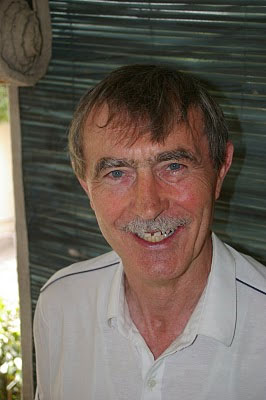
From 2001 to 2005, he was assigned in Ireland after taking sometime for a sabbatical. He also wanted to be near his aging parents. His father Patrick died in November 2001 and his mother Mary died in November 2003. In Ireland, as part of reverse mission, he went to many churches and schools sharing his very rich missionary experiences in Pakistan.
Tanvir came back to Pakistan in November 2006. Reading the signs of the times and experiencing his own ecological conversion, he joined our Columban JPIC team and was our great source of wisdom, strength, inspiration and challenge in our works on ecology. He felt the urgency: ‘Now, now is the time to care for the earth before it’s too late for all of us.’ Nurturing the missionary element in the local Church also attracted him this time. ‘I was called, formed and sent as a missionary. Maybe it is now time to spend time nurturing and passing on the missionary charism to the local church’. And he started . . . yes, just started!
Fr Abid Habib said that Tanvir’s blood type wass ‘JPIC’. Of his passion and commitment to justice, Tanvir told of his experience when he was new to the country. A friend in Lahore took him out for a Pakistani meal. His friend did the ordering, ‘Chicken karaya.’ ‘With or without chilies?’ asked the waiter. ‘No chilies.’ That night, Tanvir reflected on the ‘chicken karaya with no chilies.’ Could you call a meal without chilies a real Pakistani meal? Likewise, could you call a church Christian if it is not involved in the justice apostolate especially when Pope Paul VI stated, ‘We consider working for justice a constitutive element of preaching the gospel.’ Tanvir was chairperson of the Justice and Peace Commission of the Major Superior Leadership Commission of Pakistan for many years and had always been an active member of JPIC since 1982.
The Word becoming flesh was central to his life and spirituality. ‘Emmanuel . . . God-is-with-us, God is with the poor and the oppressed, with the exploited, polluted Earth’. That is where Tanvir enfleshed the Word. During his entire life and missionary journey, Tanvir established and deepened relationships with his own family and with the wider Columban family. Wherever he had been, he made friends for life as many of us present here could attest. In our celebration of his life and mission, let’s take a moment to remember our connections with Tanvir, with Fr Tommy O’Hanlon and the gifts and blessings we received from having known him.
Tanvir, the whole of the earth will be blessed by you;
In God you have made your home
The stars will dance as they call out your name
And your heart always laughing with joy
With the whole community of life.
We thank God for the gift of you
We celebrate your life and mission
In the midst of our shock and pain
Because with you and through
We have been blessed in abundance.
You may contact Gloria Canama at gscanama@yahoo.com
Some links to Tribute to Fr Tanvir and news on his death:
The Saint Who Failed Math
By Richelle H. Verdeprado
The author is a fourth-year Social Work major at the University of Negros Occidental-Recoletos (UNO-R) in Bacolod City and a frequent contributor to Misyon.
This was my first time to hear of the name Chiara Luce Badano. This was also my first time to write an article about a teenager who will soon be beatified.
I didn’t know Chiara – ‘Chiara’ is the Italian form of ‘Claire’ and means ‘clear’ - Luce personally and there’s no way for me to meet her now. Luce died a year before I was born. But a well-lived life is a life that is never meant to die. It is a life worthy of being shared with people of all ages from all walks of life. Just as I longed for and tried hard to know about the lives of heroes and heroines who were generations ahead of me, I felt stirred in learning about Luce, a fine-looking, creative and sports-loving Italian who died even before she reached 19. With all interest, I thoroughly searched for facts about her. I wanted to know the events in her life that have led to her beatification on 25 September this year.

It took eleven years of waiting for Ruggero Badano and his wife Maria Teresa Caviglia before they had their first and only child. Chiara’s arrival on 29 October 1971 at Sassello, Italy brought great joy to the couple. Chiara’s father was a truck driver. He was quiet by nature. Her mother was friendly and loving. Both of them had a very strong faith. These words from Chiara’s mother can attest to this. ‘Even though we were so immensely happy, we understood straightaway that this child wasn’t ours alone. She belonged to God first of all.’

Luce was a member of Focolare Movement, an international religious organization that promotes the ideals of unity and universal brotherhood. Actually, the name ‘Luce’ was only given to her in the latter part of her life by Chiara Lubich , the movement’s foundress who was very close to her. Lubich wrote her a letter with these words, ‘Chiara, “Light” is the name I have thought of for you. Do you like it? It is the light of the ideal that conquers the world. I send it to you with all my affection . . .”
‘Luce’ is the Italian for ‘light’ and I prefer calling her Luce because I found the name to be a reminder of what her presence brought to the people close to her. The name fits what the memories of Chiara Badano’s life will become especially to the youth of today’s generation - a light. Luce’s inspiring story will give light to those who are suffering from sickness, to childless parents who are longing for a son or daughter, to students experiencing difficulties in passing their subjects and to parents facing the loss of a beloved child’.

During her childhood days, Luce was asked to write a letter to Baby Jesus as school homework. When most children asked for toys, foods and candies, young Luce asked this, ‘Make grandmother, and all the people who are sick, well again.’ This prayer from a child led me to reflect what selflessness truly is.
Luce was just like any teen. She was nurtured by her supportive parents and by the special Focolare meetings she attended. Just like any other teen, she also experienced difficulties despite being a diligent student. She even failed mathematics in high school. But with enthusiasm she continued dealing with hardships. She loved to play tennis, to swim, and to do mountain climbing. She loved to hang out in coffee shops with her friends. She loved adventure. At a young age, she dreamed of becoming a flight attendant.

But God had another special plan for Luce. One day, while she was playing tennis, she felt an unbearable pain in her shoulder. Later on, she was diagnosed as having Osteogenic Sarcoma, a form of bone cancer. The future that she had been looking forward to began to drift away from her. Yet her illness failed to take away from her the hope for living and the happiness found in it. It was at that moment that the real story of her life began to unfold. It was at that moment that she experienced God’s love more. It was at that same moment that the people around her experienced God as well.
Luce nearly died on 19 July 1989 from a hemorrhage. That was a difficult time for her family and friends. But Luce with all conviction said to them, ‘Don’t shed any tears for me. I’m going to Jesus. At my funeral, I don’t want people crying, but singing with all their hearts.’ Luce was to live for another year.

‘Goodbye. Be happy because I’m happy.’ Those were the last words spoken by Luce to her mother before she passed away on 7 October 1990, a Sunday, at 4 am. Some 2,000 people attended her funeral which was like a wedding celebration. She had prepared for the ‘wedding celebration’ together with her mother. Luce saw her death as the day for her to meet her ‘spouse’ in heaven. It was she who personally gave instructions on how she wanted to be dressed. She chose the music, the songs, the flowers and the readings.
Even after Luce’s death, the effect of her presence was still felt by people who came to know her. They were inspired to live the Gospel and to follow God’s will. Luce’s process of beatification began in 1999. Through the initiative of Bishop Livio Maritano of Acqui, she was declared a ‘Servant of God’. A young boy in Italy was dying from meningitis. His organs were shutting down. There was no way to save his life and he had been given only 48 hours to live. His parents learned about Luce’s story. They sought her intercession. They were surprised to discover that the boy was then fully healed. The doctors could not explain what had happened and now, I’m calling it a miracle. I am happy that Luce’s holiness is now being recognized.

I believe that God has chosen Luce in a very special way for Himself. The eleven years spent by Luce’s parents waiting for her arrival tells me about hope. Luce endured her illness with complete faith in God. She faced death with certainty that God would be with her. No amount of pain took away her hope. Luce reminds me to become a light to others. Luce reminds me that everything happens for a purpose and that God’s will is perfect for us. Luce reminds me that in light, there is hope.
You may email Richelle at rich_verde706@yahoo.com.ph or write her at San Columbano, PO Box 588, 6100 Bacolod City, Philippines.
Some Websites
- Videos on Chiara Luce Badano
- Focolare International website (English)
- Chiara Luce Badano page on the Focolare International Website
- Chiara ‘Luce’ Badano website (English)
- Sainthood at the age of 18: Extract from an article by Michele Zanzucchi – Citta’ Nuova, Rome
- Focolare to have 1st beatified member: Chiara ‘Luce’ Badano by Carmen Elena Villa
- Blessed Chiara Luce Badano, pray for us by Christopher Stefanick
Stages of Canonization
- The bishop of the place where the person lived or is buried starts a formal investigation of the person’s holiness. Once this has begun the person is called ‘Servant of God’.
- If the Pope accepts the recommendation of the diocesan commission that the candidate’s heroic virtue be formally proclaimed, the candidate is then known as ‘Venerable’.
- If a ‘Venerable’ has been martyred the Pope may declare that beatification may take place. In the case of a ‘Venerable’ who is not a martyr but a confessor, that is, someone who has heroically ‘confessed’ or witnessed to the Christian life, a miracle through the intercession of the candidate is required before he or she can be beatified and be known as ‘Blessed’. This is a formal declaration that the person is enjoying the Beatific Vision, ie, is in the presence of God in heaven for all eternity. Pope Benedict usually delegates a cardinal to officiate at beatifications, though he will beatify the Venerable John Henry Cardinal Newman in England on 19 September.
- Sainthood is the final stage and requires another miracle through
the intercession of the beatified candidate. Only the Pope may canonize. In
earlier days there were no formal canonizations but people recognized the
holiness of someone who had lived among them. In using the word ‘saint’ in
the title of the article on Chiara Luce Badano we are taking a certain
liberty. In common speech we often refer to someone, living or dead, whose
holiness is apparent as a ‘saint’.
Vocation Page
A Chapter In My Life
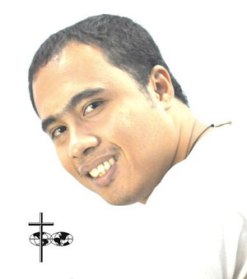
By Jason Antiquera
The Beginning of the Chapter.
Stories we read in books are often broken into chapters not only so that readers can have a good stopping point in reading but also to indicate movement and shifts in time, situations and, in some case, places in the story. My period of regency, which is a time of discernment while being out of seminary formation, was a particular and important chapter in the story of my life. Such a period indicated a serious time of reflection on the movement of the Spirit in my life as it unfolded in and through my daily experience.
How did my regency come about? It all started when I decided to leave the Columban formation program after 17 months of my two-year First Mission Assignment (FMA) in Peru in 2008. My decision came from so many challenges that I needed to face, both internal and external to me. In my first eleven months in Peru, I underwent four surgical operations, three of them major, and was held up twice in the parish where I was assigned. In my ‘leaving’ puzzle, there were also other areas of concern such as my questions concerning my vocation to the missionary priesthood. Several days after I arrived in Manila from Peru on 1 December 2008, I asked for a regency program here in the Philippines so that I could have at least one year of formal discernment.

Mural by Jason left, on the wall of the Daycare Center of L'Arche Punla in Cainta, Rizal, with Jörg Leins from Germany who spent a year at Punla as an assistant.
On the Movements in Life.
My life-situation during regency could be divided into three major movements: from being a trainee in a call center in Quezon City for three weeks to being a substitute Christian Living Teacher for three months at Don Bosco School, Manila, and finally as Luzon Mission Animator for the Columban Mission Awareness Ministry for one year. I lived in three different boarding houses where I rented a room. Along the way, I met and worked with different people and have made several friendships. I never had such a rapid movement in my life as during that year. At some point, I felt tired of moving since it implied adjustment to new environments and people. I considered myself a wanderer – someone who constantly moves, without a permanent place to stay and where home is the moving. I came to understand life as a wandering – a search for a real home, for the heart, for the ultimate treasure, for the truth, for peace and joy, for an unconditional love, for the real God. I have realized that situations change, that you move in space and that people come and go, yet God is a faithful companion of a wanderer.
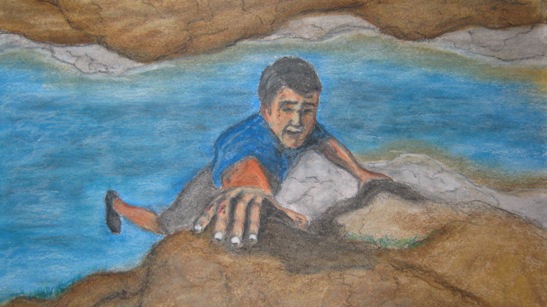
'Be Not Afraid,' by Jason.
On the Value of Life.
‘When everything fails, choose life’ is a phrase I read somewhere that remained with me like an inscription engraved on a rock because it hit me deeply. Did I feel like a failure? When I entered the seminary in 2002, I was naively looking forward to a one-way, straight road ahead and tried to surpass every challenge for the sake of walking on that same path. Yet, one day I woke up on a road I had never initially planned to take on. When I found myself no longer walking on the path where I started, I asked, ‘Why did I leave that road? How come I feel lost?’ Another self-directed question followed: ‘Am I really lost?’ I found that changing the route on a journey is necessary, like the experience of Joseph and Mary, with the baby Jesus, who ‘went back to their own country by a different road (Mt. 2:12),’ to avoid Herod. Changing the route has also changed my image of God.
I learned how to be independent, to re-create my life and lead it accordingly. I learned to face the world and its challenges alone and squarely, without fear. When I started taking on that view, I asked myself, ‘Have you become arrogant?’, ‘Where is God in your life after all these years?’ I have experienced a God who is expressed in a song, ‘I will be Yahweh who walks with you…in every land…strong and constant is my love’ and in the words of the Lord to Gideon in the book of Judges, ‘Go in the strength that you have…I will be with you (Judges 6:14, 16)’. Such an insight became a foundation of a real inner freedom. I had a metaphor of my relationship with God as a vehicle on a journey where God is the driver and I a passenger, where life was being driven by God’s will so-called (in a false understanding of the concept). I still have that same image at present. However my life experience has reformed it: I am the one driving the vehicle and God is my constant companion. In this way, I have come to experience God’s unconditional love and faithful presence in my life.

Portrait of Jason and Mother Thomas, African-American woman whom he used to visit as part of his ministry to elderly people in Chicago. Jason’s painting was an exhibit at Chicago Cultural Center, June-July 2007, on the theme ‘Intergenerational Moment’. Mother Thomas was so happy at her portrait being exhibited that Jason gave her a photo of it as a souvenir before leaving Chicago.
On the Guides and People in our Lives.
One of the best stories that I have ever come across is Dante’s Divine Comedy. One thing that struck me throughout Dante’s expedition, from inferno through purgatorio until reaching paradiso, was the presence and the role played by his guide, Virgil. Throughout my time of discernment, the presence of guides, particularly my spiritual director, has been vital to me. It helped me focus my attention on the path, which I left, where I wanted to return despite the distractions around me. I considered my director as a personification of God’s guidance, like a light that shines over the path while you pass through a dark forest. My spiritual direction made me feel whole when I shared my entire story without fear and without being judged – just a complete surrender, like being totally naked in front of God. Through it, I have renewed my commitment to trust and let go of the last piece of doubt I was holding onto. Every moment of spiritual direction is a moment of prayer and a revitalized commitment to freedom, which is the fountain of God’s unconditional love.
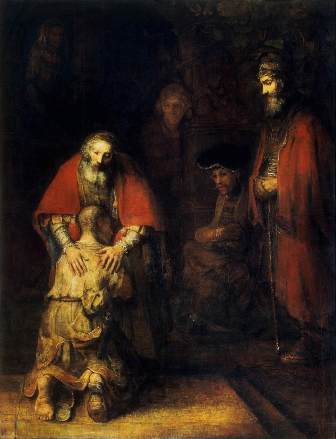
The Return of the Prodigal Son, Painting by Rembrandt
End of a Chapter.
I remember reading Henry Nouwen’s The Return of the Prodigal Son, a reflection on Rembrandt’s painting on the same theme, on the Fourth Sunday of Lent (14 March) since the parable was the Gospel for that Sunday. Reading the book touched me deeply. I realized my desire to return to the community that I had once left. I felt empathy towards the younger son in the story while saying to myself, ‘I hope to be given that chance to return, the same as the younger son in the story.’ In 24 March, ten days after I read the book and five days after my interview with the evaluation board, I received news from Fr Patrick O’Donoghue, the Regional Director, welcoming me back to the seminary. I felt that the story told by Luke had became part of my real life story and made me say, ‘I now know literally how it feels to return and be welcomed!’ I feel happy but I am not thinking of a live-happily-ever-after-return to the seminary community. I know that some inner struggles don’t really go because, in fact, some become part of a cross that I need to carry. Yet, I believe in Christ’s call to metanoia – a change of heart – where all things are made new as we take on a new perspective and new mode of looking at and responding to life.
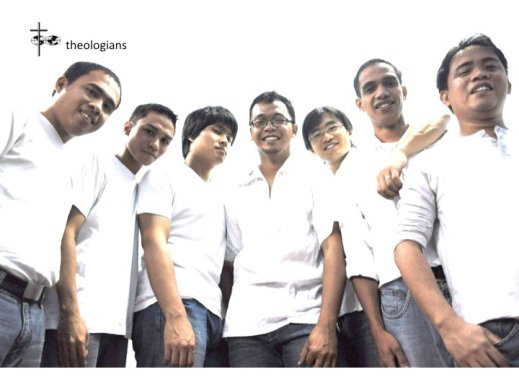
Jason with some fellow Columban Seminarians.
You may email Jason at redex01@yahoo.com
Your Turn

Here is a letter we found in our files with a response from the author of the article that moved her to write.
6 November 2005
‘In God’s hands, we see our lives yet we are the ones who shape them to the fullest for His greater glory.’
Dear Mr Lester Alamares,
I am glad to have read your story in the youth page. It is good that Misyon paves the way for the chance to share experiences through Our Hideaway – ‘l know what my plans for you are’ – in July-Aug 2005.
I was struck by your story and I really do agree that God has plans for us.
It is right to say that at times we ask God to give us signs to deepen our faith
and strengthen our relationship with Him. In response to this, we tend to think
of ways that would satisfy our longing and desire. Reality speaks of inevitable
changes that may guide us in decision-making.
The most recent events in your life really made you strong and firm to face the
BEST PATH for you… God is so good that He gives us HOPE despite our failures. In
relation to this I would also like to stress what you’ve written about ‘NEW
OPPORTUNITIES’ – the idea that everyone must realize. You have proven to
everyone and to yourself that you are truly God’s servant –in your own ‘SIMPLE
BIG WAYS.’ To share with you, once I attended the National Youth Festival 2005 –
Christ’s Youth in Action (CYA). It is great that I have experienced faith’s
other dimension through the exposure to youth evangelization as a starter. May I
also have wise decisions in life that will move mecontinually closer continually
towards God.
‘Your story will be an instrument to self-discovery with God as the center of our lives.’
Yours truly,
Lauriz Monica V. Chan
4th yr Student of St Paul College of Ilocos Sur
leica_vchan@yahoo.com
‘His First Love . . . And His Real Love’
By Rowena D. Cuanico
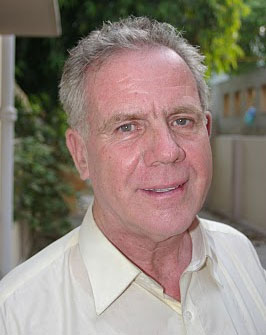 Fr Patrick McCaffrey was born in County Fermanagh, Northern Ireland in 1944 and ordained in St Eugene’s Cathedral, Derry, on 20 December 1967. He went to Fiji in 1968 and moved to Pakistan when the Columbans opened a mission there in 1979. In 2000 he was transferred to Britain where he worked mainly with Muslims, some of them refugees from the Middle East, in Bradford. He also celebrated Mass regularly there with Pakistani Catholics. He moved back to Fiji and later was again assigned to Pakistan, where he died suddenly on 18 May this year.
Fr Patrick McCaffrey was born in County Fermanagh, Northern Ireland in 1944 and ordained in St Eugene’s Cathedral, Derry, on 20 December 1967. He went to Fiji in 1968 and moved to Pakistan when the Columbans opened a mission there in 1979. In 2000 he was transferred to Britain where he worked mainly with Muslims, some of them refugees from the Middle East, in Bradford. He also celebrated Mass regularly there with Pakistani Catholics. He moved back to Fiji and later was again assigned to Pakistan, where he died suddenly on 18 May this year.
Rowena Cuanico, from Samar, is a Columban Lay Missionary who worked in Fiji before taking up her present assignment as Coordinator of Columban Lay Missionaries in the Philippines.
Big heart. These are two words that I feel best describe Fr Pat McCaffrey, the man, his life, faith and vocation. His heart was big, so big that it had a sacred space for everyone. In his heart, everyone mattered.
I first heard the name Pat McCaffrey when we – six Filipino Columban lay missionaries on our first mission assignment in Fiji - were doing our orientation on Columban Mission in Fiji. But it wasn’t until Beth Briones and I arrived at Holy Family Parish, Labasa, a few months later that I started to come to know more about Father Pat and his work with the people of Labasa.
Since Beth and I both studied Hindi, we started our ministry in the Hindi-speaking apostolate in the parish. We were based at the Mission Centre in Naleba, which serves as the heart of the Hindi-speaking Apostolate. Hearing the name of Fr Pat McCaffrey did not come as a surprise at all. Countless stories about him were being told and retold by the people who came to know him when he was a young priest in the 70s. They would tell us about how he would visit them in their homes, ate, laughed and cried with them. He worked with them in the sugarcane plantations. He encouraged them to study, even making it possible for some to train at Corpus Christi Teachers’ College. He was simply one of them.

Fr Thomas O'Hanlon. Photo taken after Easter by Fr Gary Walker.
From these stories Father Pat became more real for me. He seemed like an idol, a living legend. And as I heard more stories about him, I felt uneasy and afraid. Big shoes to fill, I told myself. But I also felt proud to be part of that long tradition of Columban missionaries who are remembered by the people with great respect and a deep sense of gratitude in their hearts.
The moment for me to finally meet the man came in September 2002. It was Father Pat’s sentimental return to Fiji after 22 years. It was special for us in the parish as he was to be the main celebrant at the Mass of the Triumph of the Cross, the feast of the Naleba Catholic community.
Father Pat arrived in Labasa two weeks before the celebration. Word slowly spread that he was in town. And it was greeted with joy. For them Father Pat had come home. For nearly two weeks Father Pat, Beth and parish leaders visited families in almost all the sectors of the parish. This was very Father Pat.
Two days before the celebration, Master (Teacher) Patrick Dass, Master Mul Deo and I went to see him at the presbytery (convento) to discuss the program. He was still on the road! It was then left to Fr Palenapa Tavo, acting parish priest, to try to get hold of Father Pat and explain to him the activities for the feast day.
He came the night of the celebration. The preparations were in full swing. Beth and the rest of the decorations committee were working on the altar and the stage. Some women were making Indian sweets. Others were preparing the food. It was a very festive atmosphere.

Rural scene in Vanua Levu, the island where Labasa is situated
The welcome was indescribable. When they saw him, it was as if the whole place sprang back to life, life in its fullest. There were introductions, hugs, laughter, and tears. It was a welcome fitting for one of their own.
It was ‘full house’ during the celebration. People from different sectors of the parish, from neighboring villages, and friends came. There was something in him that people were drawn to him. And I soon quickly realized the reason why: he knew each one of them, by name. They were in each other’s hearts.
At the beginning of the Eucharist, when he began to speak and read in Hindi (Devanagri), I was amazed. I could not believe that he had been away for nearly 22 years. His Hindi was simply flawless! When he preached, everybody seemed fascinated by his amazing sense of history of the place and of the people. He paid tribute to their strong faith and how their faith had carried them all these years. For me it was a very memorable occasion.
After the celebration we spent nearly two weeks visiting families in the neighboring villages. We would take parishioners with us so they could visit their relatives, thus making the visits extra special. We drove for over two hours to visit one Catholic family that lived in a mainly Hindu community. While we were visiting families, we tasted practically all kinds of tea and juice, Indian sweets and curry. Stories were told and re-told. It was like learning history from the very people who were part of the story. These were sacred moments.
It was a privilege for me to have come to know Father Pat. I treasure deeply the time we spent together in Labasa. Our days would begin early and end late. But we found time to share about our vocation, missionary life, his life in Pakistan, my life in Fiji and our families in different parts of the world. But I never realized that his visit was going to be beginning of a shared journey and of a beautiful friendship.
 I returned to Fiji in August 2003 for my second term. A few months later, Father Pat returned to Fiji. I was at the Central House in Suva when he arrived. I still vividly remember my words of welcome to him: ‘The heavens are rejoicing that you have decided to return to your first love.’ He gave me a big smile and a warm hug. For indeed his return was greeted with joy and hope by the people who knew him.
I returned to Fiji in August 2003 for my second term. A few months later, Father Pat returned to Fiji. I was at the Central House in Suva when he arrived. I still vividly remember my words of welcome to him: ‘The heavens are rejoicing that you have decided to return to your first love.’ He gave me a big smile and a warm hug. For indeed his return was greeted with joy and hope by the people who knew him.
Very soon we found ourselves working together in the Hindi-speaking Apostolate in the Greater Suva Area covering eight parishes. I was not officially assigned to this ministry. But since we have a Hindi-speaking community at St Pius X Parish, Raiwaqa, where I was assigned, we were part of his coverage area. And as for me, this ministry was beyond what was ‘official’. It was a very personal choice. I was very interested in being involved in the ministry. I simply wanted to share the experiences on mission that the people of Labasa had blessed me with.
Family visitations became the heart of the Hindi-speaking Apostolate. Father Pat spent hours after hours visiting families in the eight parishes. I joined him many times in visiting families. He worked tirelessly with the local clergy, parish leaders as well as with leaders of the Hindi-speaking communities in trying to bring people together. The coordinating committee, which was formed by leaders from the different parishes, worked hard to organize programs, events and celebrations. It was a time of renewing acquaintance with many.
Father Pat initiated the revival of the Rite of Christian Initiation for Adults (RCIA) in eight parishes. With Rosema Dass, we would meet every week at St Joseph’s Secondary School to go through the sessions ourselves. Then we would conduct the classes for catechumens in our respective parishes. This went on for nearly one year! The commitment and dedication of the RCIA instructors from the different parishes were extraordinary. But Father Pat’s encouragement and support to all of us also meant a lot.
Father Pat’s dedication to his ministry and to the people he worked with was unquestionable. Not even sickness would prevent him moving around. I remember when he was down with gout a few days before a big activity in the Hindi-speaking Apostolate. I told him that the coordinating committee was on top of the situation. But this did not convince him to take the day off. He was insistent that he had to fulfil his responsibilities. I threatened to strap him to his bed so that he could have the rest he needed. But his responsibilities were all that mattered. He was limping but there he was on the road again! This was also very Father Pat.
The activities in the Hindi-speaking Apostolate were many, varied and were located in different parishes. These required a lot of my time, effort and energy. I was already struggling to have some balance between my commitments. I said to Father Pat one day, ‘Thank you for all the excitement that you bring to my life.’ He simply laughed.
But it was not all work with Father Pat. He, American Columban Fr Ed Quinn and I would really try go to a restaurant or a movie every week. These weekly outings were always a nice treat for me. When we would go out we had a golden rule – ‘Anything Columban is banned in our conversations’. So we would end up talking about politics, sports, families and our former lives!
Father Pat’s generosity extended ‘beyond borders’. He also gave his reassuring presence to the Filipino community in Fiji, in our joyful and sad moments.
I enjoyed working with Father Pat, with and despite the excitement that his intense passion for mission brought to my life. But I felt even more privileged to have him as my personal companion for four years. My life was enriched by our honest and open sharing. His deep faith and trust in God inspired me. And I really felt that he knew and understood the beatings of my heart so well.
It was in Taiwan on the first day of the Columban Lay Missionaries’ Renewal Gathering in February 2008 that I learned of Father Pat’s assignment to Pakistan – from the Superior General himself. I was happy for him. But I felt sad. I thought I was going to lose a friend. He was a life support to me. From Taiwan I sent an email to him wishing him well on his new assignment and thanking him for his support and encouragement. But I also expressed to him my sadness that I would be losing a friend.
But Father Pat did not leave me behind in Fiji. It was I who left him behind there. Two months after his appointment to Pakistan, my appointment as Lay Missionary Coordinator of the Philippine Region came. Father Pat was happy for me. But he also knew of my apprehensions in taking up the new assignment. He was very encouraging.

Sacred Heart Cathedral, Lahore
Father Pat was one of those who saw me off at the airport. He was the last person to give me a big and warm hug. He told me one of his sincerest wishes for me – that after I finished my term in the Philippines, we would see each other again in Pakistan!
I remember when friends in Fiji learned that he would be returning to Pakistan. Most of them could not understand why. In the absence of any credible explanation, I simply told them, ‘He wants to die there.’ I could sense that for him his return to Pakistan was a homecoming. Fiji must have been Father Pat’s first love. But I have the feeling that in his big heart, Pakistan turned out to be his real love.
You may email Rowena Cuanico at rowenacuanico@gmail.com or write her at St Columban’s Lay Mission Center, 34 Rosario Drive, Cubao, 1111 Quezon City, Philippines.
Some links to Articles on Father Pat McCaffrey